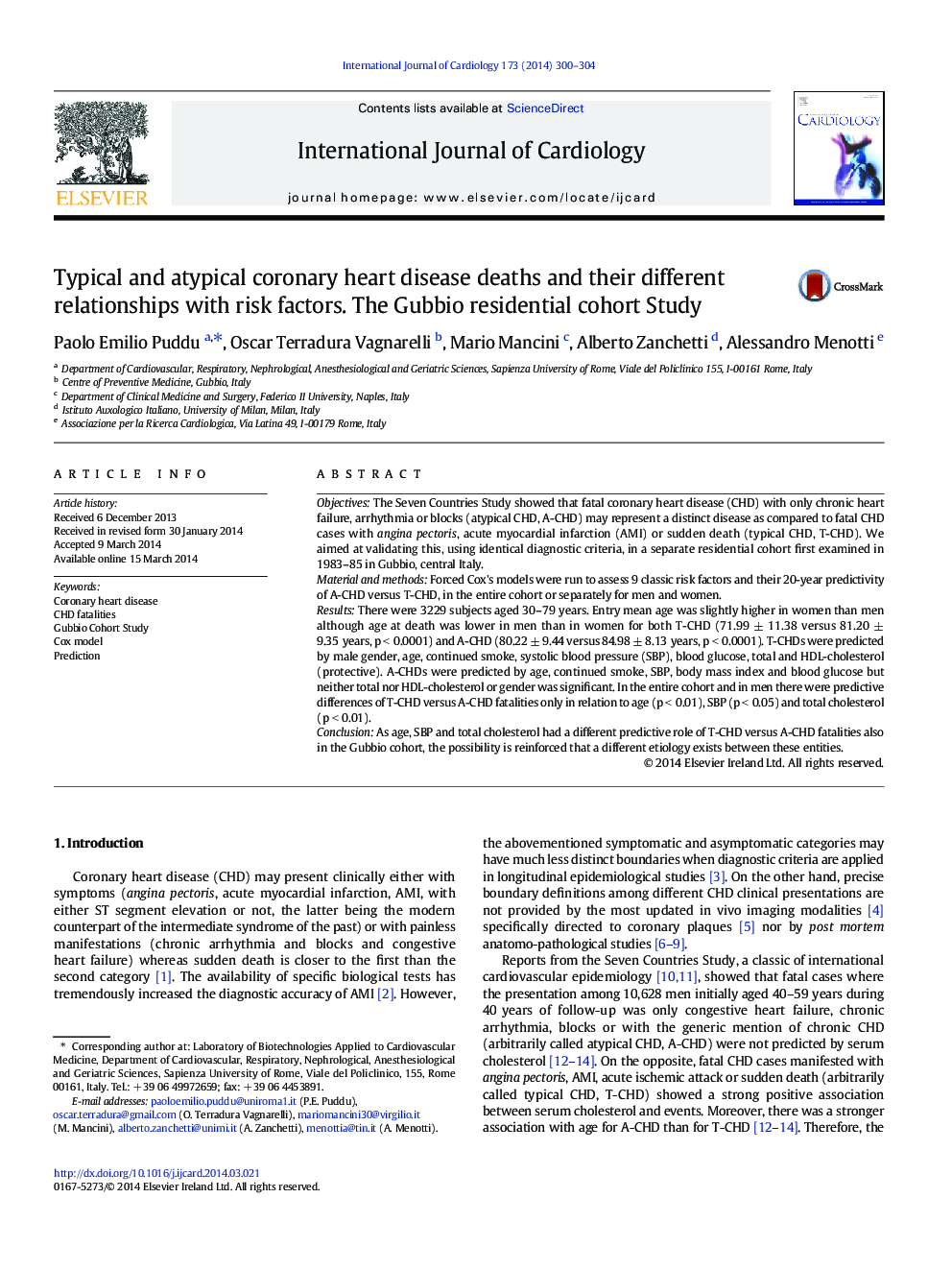| Article ID | Journal | Published Year | Pages | File Type |
|---|---|---|---|---|
| 5972277 | International Journal of Cardiology | 2014 | 5 Pages |
ObjectivesThe Seven Countries Study showed that fatal coronary heart disease (CHD) with only chronic heart failure, arrhythmia or blocks (atypical CHD, A-CHD) may represent a distinct disease as compared to fatal CHD cases with angina pectoris, acute myocardial infarction (AMI) or sudden death (typical CHD, T-CHD). We aimed at validating this, using identical diagnostic criteria, in a separate residential cohort first examined in 1983-85 in Gubbio, central Italy.Material and methodsForced Cox's models were run to assess 9 classic risk factors and their 20-year predictivity of A-CHD versus T-CHD, in the entire cohort or separately for men and women.ResultsThere were 3229 subjects aged 30-79 years. Entry mean age was slightly higher in women than men although age at death was lower in men than in women for both T-CHD (71.99 ± 11.38 versus 81.20 ± 9.35 years, p < 0.0001) and A-CHD (80.22 ± 9.44 versus 84.98 ± 8.13 years, p < 0.0001). T-CHDs were predicted by male gender, age, continued smoke, systolic blood pressure (SBP), blood glucose, total and HDL-cholesterol (protective). A-CHDs were predicted by age, continued smoke, SBP, body mass index and blood glucose but neither total nor HDL-cholesterol or gender was significant. In the entire cohort and in men there were predictive differences of T-CHD versus A-CHD fatalities only in relation to age (p < 0.01), SBP (p < 0.05) and total cholesterol (p < 0.01).ConclusionAs age, SBP and total cholesterol had a different predictive role of T-CHD versus A-CHD fatalities also in the Gubbio cohort, the possibility is reinforced that a different etiology exists between these entities.
